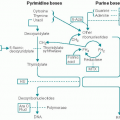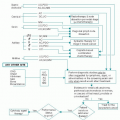Talking with Cancer Patients and Their Families
Eric E. Prommer
“I think the best physician is the one who has the providence to tell to the patients according to his knowledge the present situation, what has happened before, and what is going to happen in the future”
Hippocrates
I. INTRODUCTION.
Communication between physicians and patients is a fundamental aspect of cancer care, yet most physicians have had little training in communication. The aspects of communication most valued by patients are those that help patients and their families feel guided, build trust, and support hope. There are a set of concrete skills that can be used to effectively lead to these outcomes. A wide variety of empirical studies document that physician-patient communication is suboptimal. Physicians and nurses typically miss the full range of concerns held by people with cancer. These deficiencies in communication increase the psychological and existential suffering of patients and their loved ones. Compounding these problems is the finding that oncologists lack accuracy in detecting patient distress. Finally, poor communication also hampers a physician’s ability to provide pain and symptom management.
The National Cancer Institute named cancer communication as an “extraordinary opportunity” in 1999; the American Society of Clinical Oncology named communication as a key clinician skill. New educational models exist that have been documented to result in physician communication skill improvement. These models are being used in settings ranging from practicing physicians to oncology fellows in training. Communication skills training is associated with less burnout and work-related stress. This chapter highlights some of the techniques useful to improving communication with patients and families.
II. FUNDAMENTAL COMMUNICATION SKILLS
A. Behaviors to avoid
1. Blocking occurs when a patient raises a concern but the physician either fails to respond or redirects the conversation. For example, a woman with metastatic colon cancer might ask, “How long do you think I have?” and the doctor responds, “Don’t worry about that,” or “How is your breathing?” Blocking is important because physicians typically fail to elicit the range of patient concerns and consequently are unable to address the most important concerns.
2. Lecturing occurs when a physician delivers a large chunk of information without giving the patient a chance to respond or ask questions.
3. Collusion occurs when patients hesitate to bring up difficult topics and their physicians do not ask them specifically—a “don’t ask, don’t tell” situation.
4. Premature reassurance occurs when a physician responds to a patient concern with reassurance before exploring and understanding the concern.
B. Behaviors to cultivate
1. Ask-Tell-Ask. Always ask about the patient’s understanding of the issue. “What have your other doctors been telling you about your illness since the last time we spoke?” “How do you see your health?” Tell the patient in straightforward language what you need to communicate—the bad news, treatment options, or other information. Stop short of giving a long lecture or huge amounts of detail. Information should be provided in short, digestible chunks. A useful rule of thumb is not to give more than three pieces of information at a time. Do not use medical jargon. Ask the patient if he or she understood what was said. Consider asking the patient to restate what was said in his or her own words.
2. Tell me more. Ask patients if they need more information or if all their questions are being answered. Ask about how they feel about what has transpired and its meaning.
3. Respond to emotions. An important mnemonic to help cover emotional responses is NURSE. This involves naming, understanding, respecting, supporting, and exploring the emotional response.
III. BREAKING BAD NEWS.
This is perhaps the communication task that has been studied most extensively. Bad news can be defined as any information that adversely alters one’s expectations for the future. Its basic format is the basis for subsequent discussions at various points during the patient’s disease trajectory.
Oncologists give bad news thousands of times during the course of a career and it can be highly stressful. In a large survey of oncologists, 20% reported anxiety and strong emotions when they had to tell a patient that his or her condition would lead to death. In a more detailed study of 73 physicians, 42% indicated that although the stress often peaks during the encounter, the stress from a bad news encounter can last for hours—even up to 3 or more days afterward.
Giving bad news is more difficult when the clinician has a long-standing relationship with the patient, when the patient is young, or when strong optimism had been expressed for a successful outcome. On the other hand, when bad news is communicated in an empathic manner, it can have an important impact on outcomes such as patient satisfaction and decreased patient anxiety and depression. The physician’s caring attitude can be more important than the information or reassurance given. As with any medical procedure, giving bad news requires a coherent strategy. In this case, the strategy encompasses a series of six distinct communication steps that can be summarized using the mnemonic SPIKES. This protocol includes recommendations endorsed by practitioners and patients.
A. Setup. Prepare yourself with the necessary medical facts, take a moment to have a plan in your mind, and find a quiet place if possible. Turn off TVs and pagers. Enlist support for the patient, which means have family there, or if no family is available, find a nurse or social worker or a friend of the patient. Sit down, make eye contact, and sit no closer than 2 feet away from the patient. Have tissues available.
B. Perception. Find out if the patient understands the medical situation. What has he or she been told about the disease? What does he or she know about the purpose of the unfavorable test results you are about to discuss? If this is a first contact, what has the patient been told about why he or she should see you in referral? Correct any misconceptions or misunderstandings the patient may have. Try not to talk for at least 1 minute (which is difficult); let the patient tell his or her story.
C. Invitation. Find out how much information the patient wants to know. These days most patients want a lot of information, but this is not universally true, especially as the disease progresses and patients may want to focus on “What do we do next?” “Are you a details person or do you want the general picture?”
D. Knowledge. Use language that matches the patient’s level of education. Be direct. Avoid using jargon as it will confuse the patient. Give a warning that bad news is coming: “I have some serious news to tell you.” This will allow the patient to prepare psychologically. If the patient’s perception (step 2) was inaccurate, review pertinent information: After giving this news, stay quiet for at least 10 to 15 seconds—resist the urge to tell the patient how to feel. Give the patient time to absorb the information and respond.
E. Empathize. NURSE! (see Section II.B.3.)
F. Strategize and plan. Summarize the clinical information and make a plan for the next step, which may be further testing or discussion of treatment options.
IV. DISCUSSING DIAGNOSIS, TREATMENT, AND PROGNOSIS
A. Decision making. A number of empirical studies demonstrate that patients are interested in having some role in decision making; the question is, what kind of role does the patient wish to have? Most patients desire some decision-making role for both the patient and the physician, and a majority prefer shared decision making. One of the reasons for patient interest in the Internet for medical information is to enable them to verify treatment options they are offered and to check about options that were not offered. Shared decision making does not have to take more time and is associated with greater patient satisfaction. Steps to enhance shared decision making include
1. Elicit the preferences of the patient for information and decision making. People vary in how they want to make medical decisions. Inquire about what the patient wants in terms of involvement and decision making. You are inviting the patient to tell you how involved he or she wants to be.
2. Identify the choices to be made. Providing the patient with a road map of the conversation in a sentence or two can give a sense of what lies ahead. An example would be chemotherapy for lung cancer. First-line therapies differ little in terms of response rates, but toxicities and schedules do differ and may be important to the patient.
3. Describe treatment options and understanding of them. Describe the adverse effects, how people handle the therapy. Talk about response rates. Don’t use jargon.
4. Discuss how patient values and concerns relate to treatment options.
5. Negotiate a time frame for the decision.
B. Discussing prognosis. Realism, optimism, and avoidance are the most common strategies physicians use in discussing prognosis. Although these strategies are well intended and commonly used, they also create unintended consequences. None of these strategies are completely satisfactory, but each has useful features.
The useful feature of realism is that prognostic information helps patients and physicians to make sound medical decisions. Patients also report that realistic prognostic discussions can be blunt and sometimes brutal. A physician who presents prognosis realistically but without structuring the conversation before the information or responding empathetically afterward can be perceived as uncaring. Moreover, empirical data suggest that roughly 20% of patients, particularly those with advanced, metastatic disease, do not want complete information about their prognosis. Giving these patients realistic information may cause psychological harm, although there are not empirical studies that address this question.
Optimism can play a useful role in supporting a patient’s hopes, and many patients report that they want a doctor who is hopeful. In discussions about prognosis, however, physicians who deliberately exaggerate or overemphasize optimistic information may risk losing the trust of patients who later discover that the information they received was not entirely true.
A third strategy is to avoid prognostication altogether, often by emphasizing individual differences, unpredictability of disease course, or exceptional outliers. Collusion is a variation of this strategy in which physicians avoid providing realistic information by creating a tacit understanding that neither the patient nor the physician will bring up the topic.
Avoidance is based on reasonable concerns. First, physicians realize that they are often inaccurate when predicting survival for an individual. Second, physicians worry that discussing survival communicates a subtle psychological message that a patient will die at a given time. Third, physicians find that some patients do not want prognostic information. Finally, physicians find that bad news often causes patient distress. Yet physicians who avoid prognostication may seem evasive and consequently untrustworthy, especially when studies indicate that many patients want to talk about life expectancy.
Strategies to provide a middle-of-the road approach are few, but theoretical proposals include
1. Ask explicitly how the patient wants to talk about prognosis. Because many patients may not understand the term prognosis, an alternative is to ask, “How much do you want to know about the likely course of this illness?” This question invites a response that goes beyond “yes” or “no.” A physician could even normalize a range of patient interest: “Some people want lots of details, some want the big picture, and others prefer that I talk to their family. What would be best for you?” There will be three kinds of patients:
a. The patient who wants information
b. The patient who does not want information
c. The patient who is ambivalent
2. Patients who want to know the prognostic information.




Stay updated, free articles. Join our Telegram channel

Full access? Get Clinical Tree






